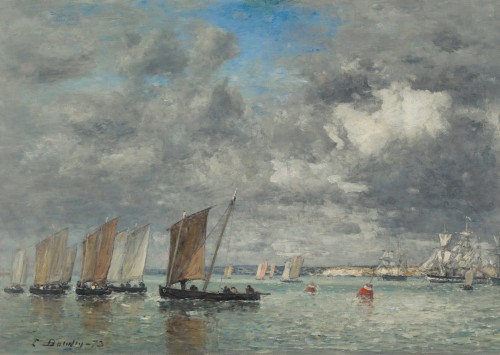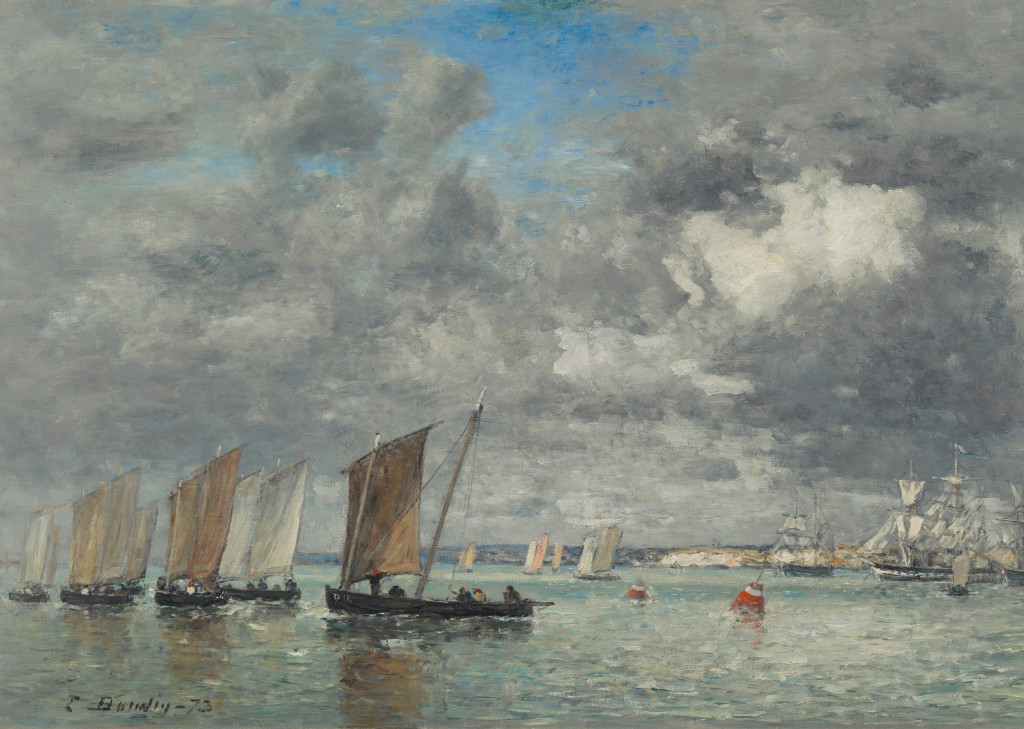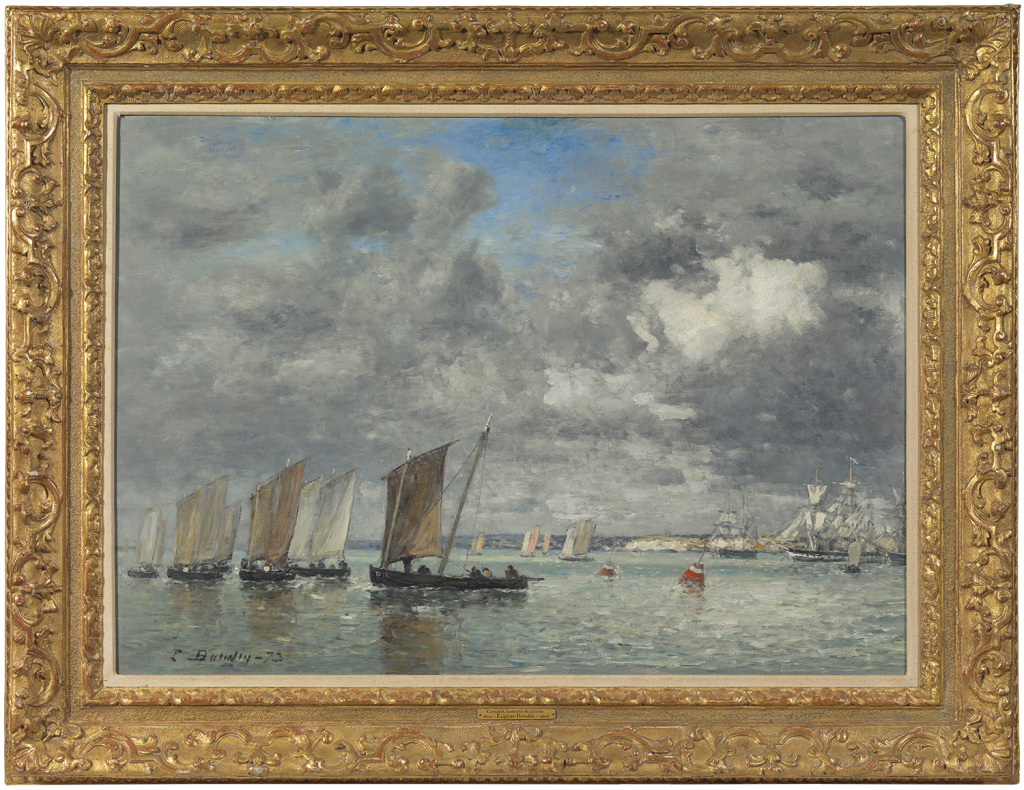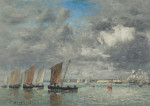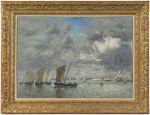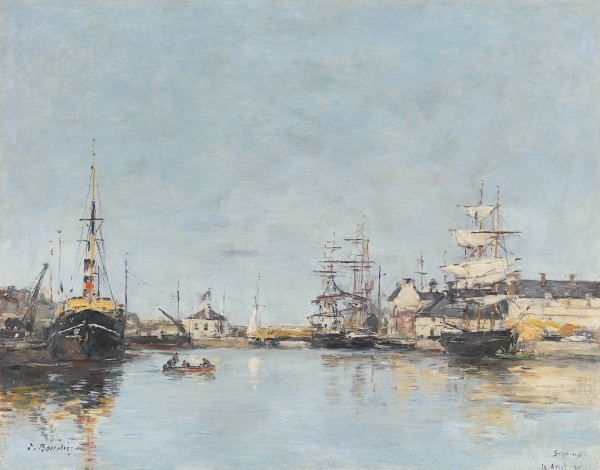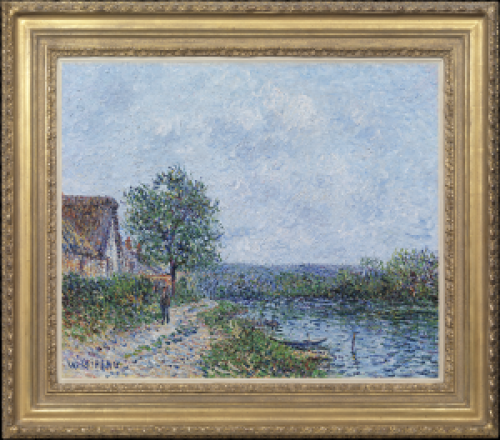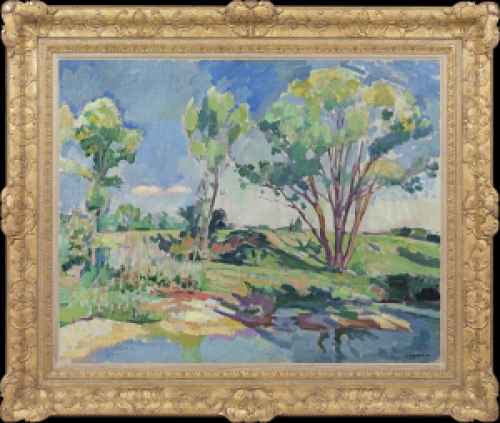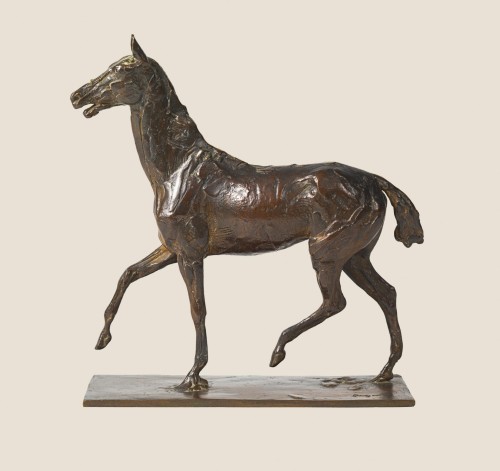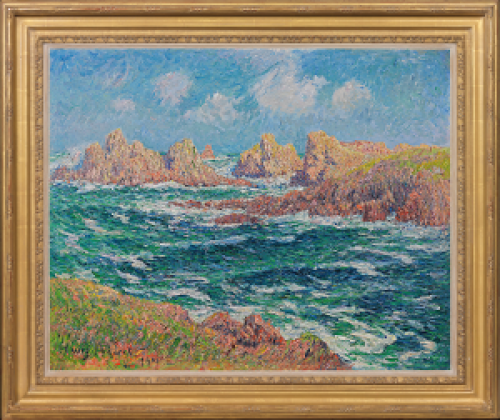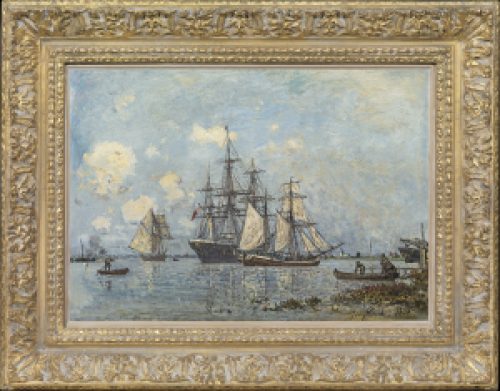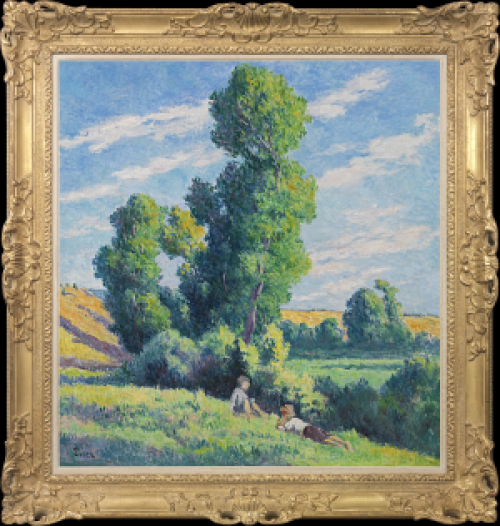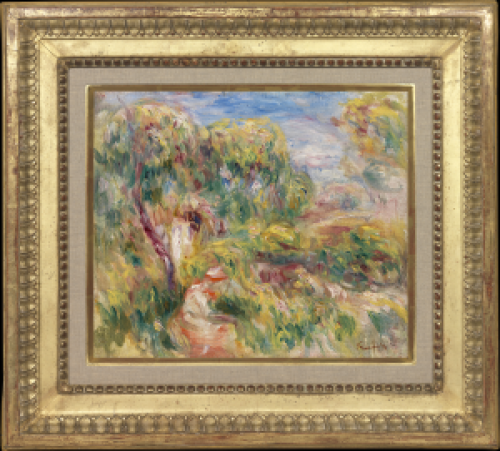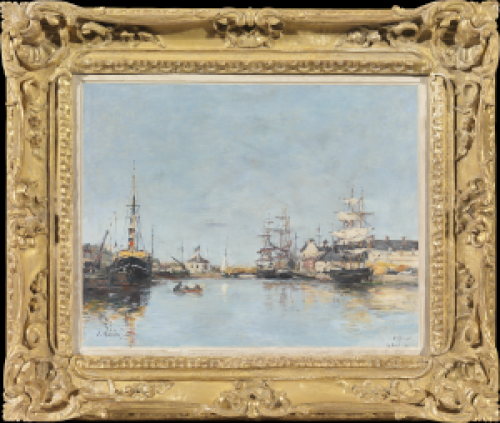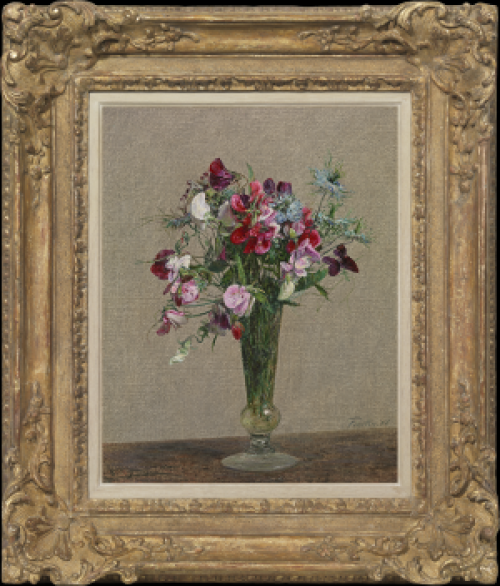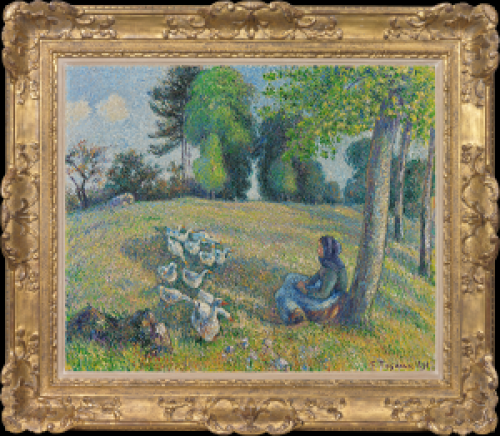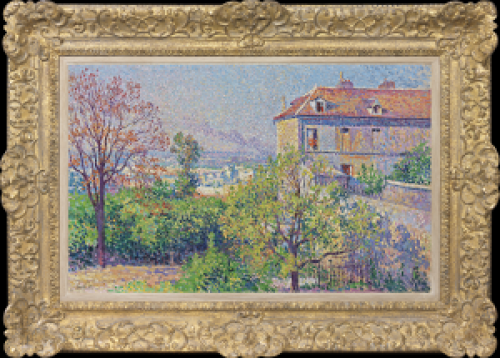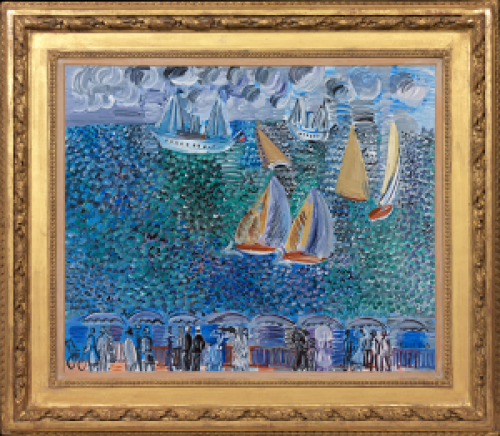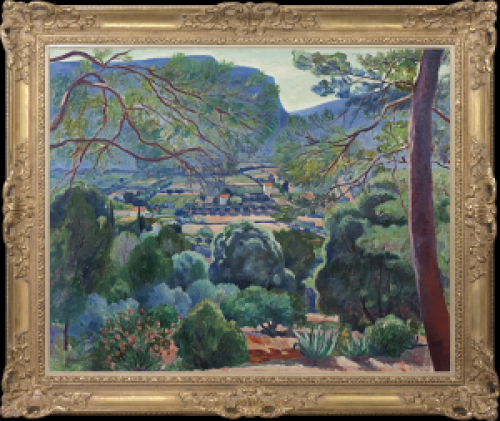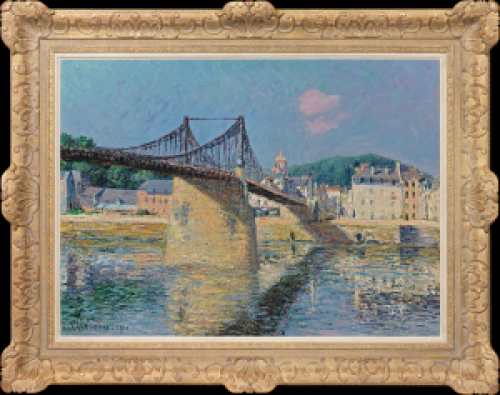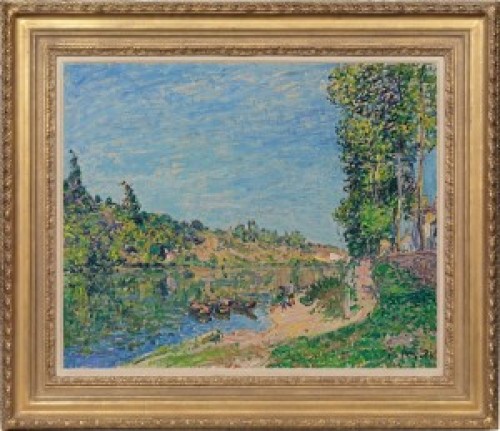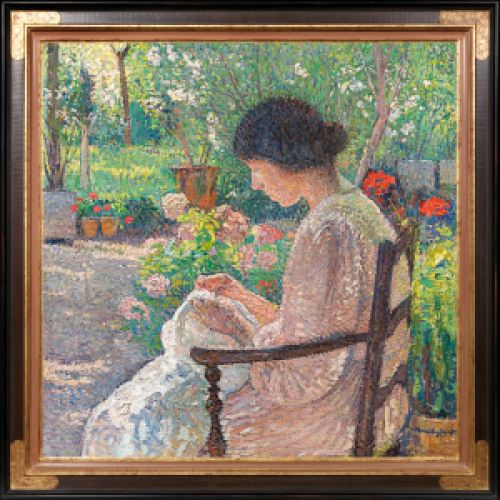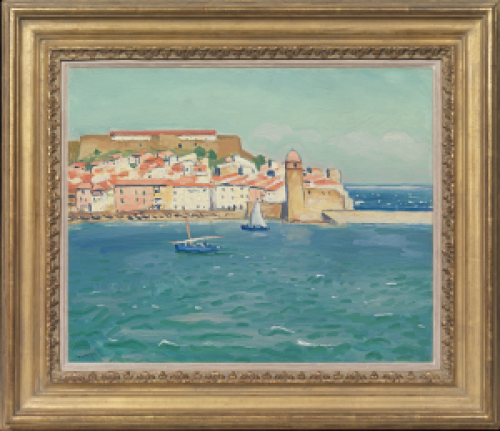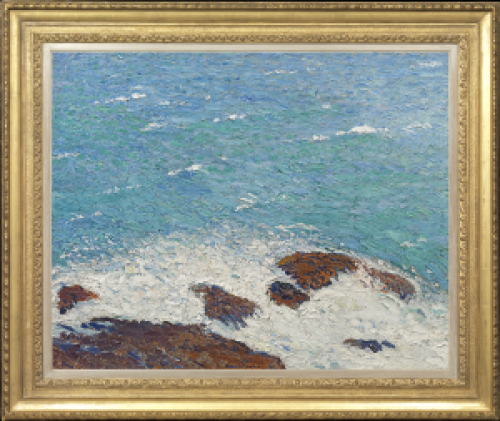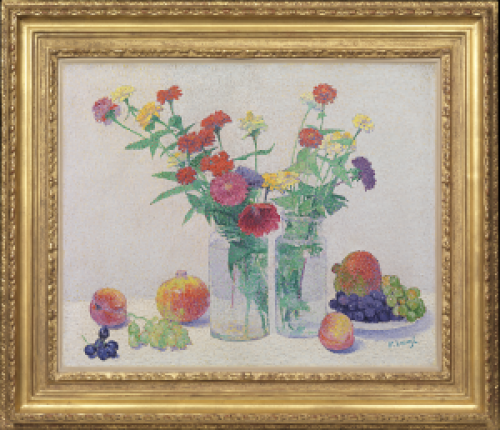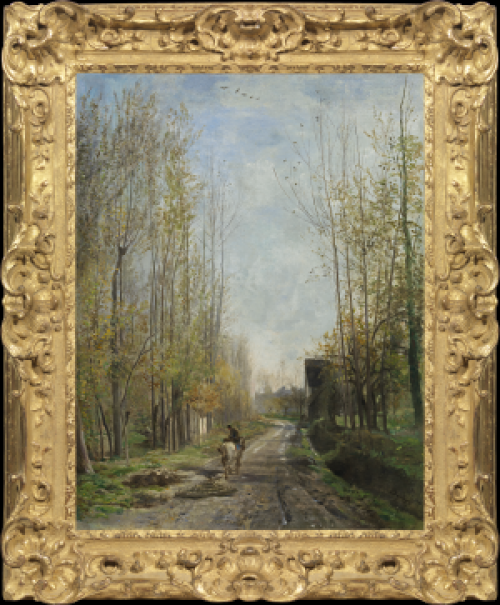EUGENE BOUDIN
Honfleur 1824 - 1898 Deauville
Ref: BX 119
Camaret, bateaux de pêche
Signed lower left: E. Boudin - 1873
Oil on canvas: 27 x 37 ½ in / 68.6 x 95.2 cm
Frame size: 36 ¼ x 47 in / 92.1 x 119.4 cm
In an antique Louis XIV carved and gilded frame
Provenance:
Dr Abadie, Paris
Mme Bertrand Berthet, Paris;
by whom sold to Galerie Bernheim-Jeune, Paris, 17th April 1916;
Galerie Bernheim-Jeune;
by whom sold to Galerie Raphaël Gerard, Paris, 20th April 1916
JG Cooper, Glasgow;
his sale, Glasgow, 27th June 1956, lot 30, illus. (£4,000)
Peter Findlay Gallery, USA
Richard Green, London, 1987;
Private collection, UK
Private collection, UK, 2019;
acquired from the above by the present owner
Literature:
Robert Schmit, Eugène Boudin, Paris 1973, vol. I, p.316, no.894, illus.
Exhibited:
Paris, Ecole Nationale des Beaux-Arts, Exposition des Oeuvres d’Eugène Boudin, 1899, no.326
London, Marlborough Fine Art, Eugène Boudin 1824-1898, 1958, no.19
This sparkling scene, made in 1873, perfectly demonstrates why Eugène Boudin was invited to exhibit at the first Impressionist exhibition the following year, showing his work among artists such as Monet, who was nearly two decades his junior. Boudin’s power of observation, sensitivity to light and expressive handling of paint was an inspiration to the ‘young Turks’ who wished to break the mould of nineteenth century landscape art.
Boudin visited Camaret, at the tip of the Crozon peninsula in Brittany, every year between 1869 and 1873, producing at least fifty-eight works; a further two are dated 1878[1]. Camaret (called Kameled in the Breton language) was a bustling, strategic port, famed in the nineteenth century for its shipbuilding and its sardine fleet. Lying on the channel that led to the great naval and commercial port of Brest, it was important in the line of French coastal defences (usually against the English). The Tour Vauban, one of a chain of coastal forts built in 1669 by Sébastien Le Preste de Vauban, remains an imposing landmark.
In this painting, Boudin depicts a line of fishing boats on a breezy day, their rust- and cream-coloured sails shimmering in the light. In the background, strong sunlight falls on the cliffs and on the sails of the men-of-war further inshore. Boudin was particularly exhilarated by the cloudscapes of this coast notorious for its squalls and storms. In his diary of 3rd December 1856, he had mused: ‘To swim in the open sky. To achieve the tenderness of clouds. To suspend these masses in the distance…make the blue explode’. Here, a huge, sculptural cloud spirals over the warships: its brightest part is dazzling, while the louring grey below threatens rain. Boudin’s vibrant brushwork – largely executed en plein air – weaves sky, shipping and sea together in a way that conveys his intense response to nature and his sailor’s understanding of ships and coastal conditions. The palette of the work is silvery – pale blues, greys and eau-de-nil, with warmer touches in the sails and the bobbing red and white buoys.
The vividness of Camaret, bateaux de pêche, where we can almost feel the keen breeze and hear the slap of the waves, is reflected in other paintings in the Camaret series, for example Le port de Camaret par ciel d’orage, 1873 (Palais Beaux-Arts, Lille), with another complex cloudscape.
Eugène Boudin, Le port de Camaret par ciel d’orage, 1873.
Palais Beaux-Arts, Lille. EUGENE BOUDIN
Honfleur 1824 - 1898 Deauville
Eugène Boudin was one of the most important precursors of the Impressionists, with his emphasis on working directly from nature and free, naturalistic brushwork. His ‘Crinolines’, depicting fashionable holidaymakers enjoying the beaches of northern France, ushered in a new genre, but he was also renowned for coastal and harbour scenes.
Born in Honfleur, Boudin was the son of a harbour pilot and bred to the sea, working as a cabin boy for his father in his boat Le Polichinelle. After a brief period of schooling, in 1835, he worked with a stationer and framer who displayed the work of artists, then set up his own stationery and framing business in 1844. Boudin’s clients included Thomas Couture, Eugène Isabey, Jean-François Millet and Constant Troyon, all of whom had an influence on his efforts to draw and paint. In 1847 Boudin went to Paris to copy Old Masters in the Louvre; he was particularly impressed by the seventeenth century Dutch school and by the Barbizon painters. In 1851 he was awarded a three-year painting scholarship by the city of Le Havre. He drew his subjects from the Normandy and Brittany coasts. In 1858 he met the young Claude Monet, who had grown up in Le Havre, and stressed to him the importance of making oil paintings directly from nature to capture the constantly changing beauties of the landscape. Boudin and Monet went on painting expeditions together, especially at the Saint-Siméon farm near Le Havre.
Boudin made his debut at the Salon in 1859, where his work was admired by Charles Baudelaire. He befriended Courbet, Daubigny and Corot, who heralded him as ‘the king of the skies’. Paris-based in the winter, Boudin spent his summers on painting tours around the coast of Le Havre, Honfleur and Trouville, inspired by the elegant society that flocked to the burgeoning seaside towns and by the busy maritime traffic. At Trouville in 1862 he met Johan Barthold Jongkind and, influenced by his boldness of technique, adopted freer brushwork and a brighter palette. The following year he married a Breton woman, Marie-Anne Guédès.
Boudin made several journeys to Belgium and The Netherlands, initially to shelter from the Franco-Prussian War (1870-71). From 1892 to 1895 he visited Venice, making subtle, atmospheric and highly individual views. He also painted in the south of France at Antibes, Villefranche and Beaulieu, where he stayed in the 1890s for the health benefits of the mild winter climate. Boudin exhibited at the Salon from 1863 to 1897 and participated in the First Impressionist Exhibition in 1874.
From the 1870s Boudin enjoyed increasing financial security. In the 1880s he was taken up by the influential art dealer Paul Durand-Ruel, the champion of the Impressionists. Durand-Ruel organised exhibitions of his pictures in 1883, 1889, 1890 and 1891. In 1892 Boudin was awarded the Légion d’Honneur. He died in Deauville in 1898.
Works by Eugène Boudin can be found in the many museums worldwide including The National Gallery of Art, Washington DC; The Metropolitan Museum of Art, New York; The National Gallery, London; Musée d’Orsay, Paris; Musée du Louvre, Paris and The Hermitage, St Petersburg.
[1] See Schmit, op. cit., vol I.

